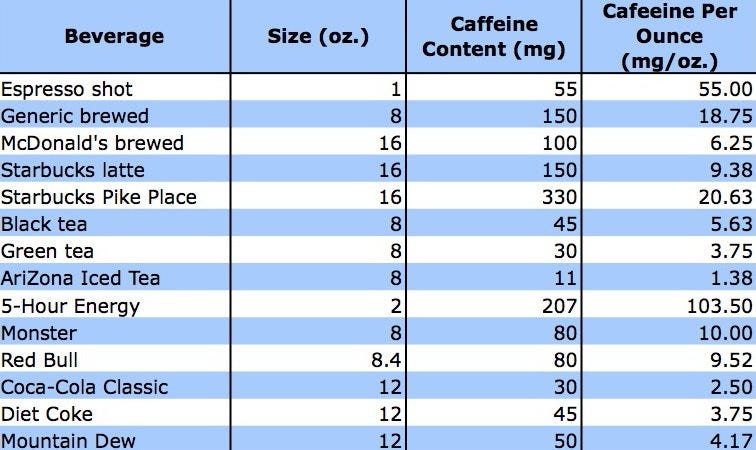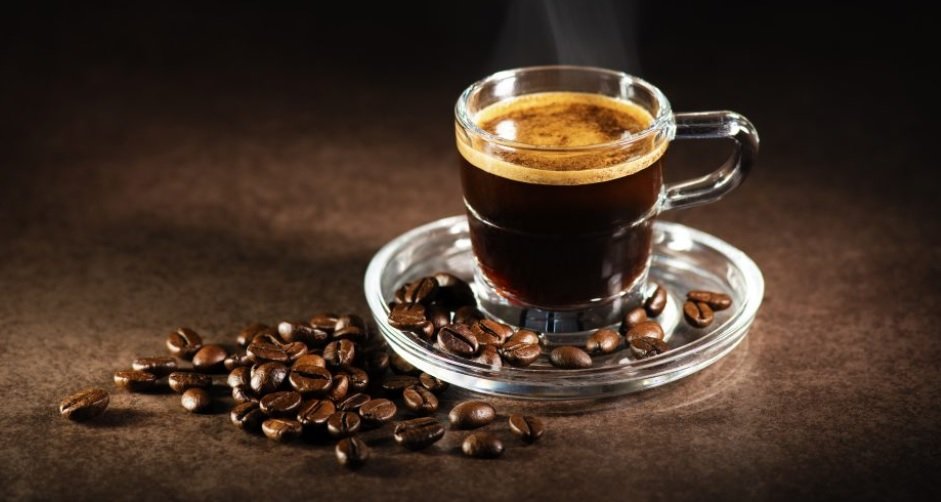
Its 10.5-fluid-ounce (311-milliliter) stubby contains approximately 279 milligrams of caffeine. Still, even some cold brews that are brewed and sold as ready-to-drink (RTD) beverages contain higher levels of caffeine than your standard drip brew.įor instance, Stumptown Cold Brew Coffee is one of the first that comes to mind. However, as a concentrate, cold-brew coffee is also typically cut with water or creamer, which levels things out a bit. This alone leads to a higher caffeine concentration. While heat helps extract more caffeine, cold brew is typically brewed as a concentrate, with a higher than normal coffee-to-water ratio of between 1:4 and 1:8, compared with a more typical drip coffee ratio of 1:15 or 1:25. Cold brewĬold brew is a different beast entirely. Instead of the typical 100% arabica beans, Death Wish and Black Insomnia source robusta coffee beans, which are typically less flavorful but contain much higher concentrations of caffeine, and blend them with arabica coffee.

By no means are these coffees normal or average. One cup of either of these coffees is nearly double the amount of the recommended safe caffeine intake. And Black Insomnia Coffee claims over 702 milligrams of caffeine for the same size. The increasingly popular Death Wish Coffee claims to pack upward of 660 milligrams of coffee into every 12-fluid-ounce (355-milliliter) cup. And though the numbers tend to vary by agency, the level of daily caffeine intake that is considered safe is between 400 and 450 milligrams. And a venti blonde roast is listed at a whopping 475 milligrams, according to Caffeine Informer.Ī single venti drip coffee from Starbucks alone contains more caffeine than the average American ingests in a day, according to a 2012 report by the FDA, which showed that number was around 300 milligrams of caffeine per person per day. Up that to a 20 fluid ounce venti (591 milliliter) and you're looking at 415 milligrams of caffeine. Its Pike Place house brew is listed at 260 milligrams for a 12-fluid-ounce (355-milliliter) cup. Starbucks, on the other hand, changes its caffeine content based on the roast level. The caffeine content value changes dramatically, based on who you ask or where you buy your coffee.įor example, a 14-fluid-ounce (414-milliliter) cup of coffee from Dunkin' Donuts is listed at 210 milligrams of caffeine and a 24-fluid-ounce extra large (710-milliliter) has 359 milligrams of caffeine. This is two to five times the caffeine content of your average soda, which ranges from 34 milligrams (Coca-Cola) to 69 milligrams (Pepsi Max).Īnd that's just the beginning. Caffeine Informer, a database of caffeine content in food and drinks, estimates the same size coffee contains 163 milligrams of caffeine. One 8-fluid-ounce (237-milliliter) cup of hot brewed coffee generally has about 95 milligrams of caffeine. Your standard drip coffee varies even more in caffeine content due to the variety and variation of brewing methods, sizes in which it is served and the varying strengths at which it can be brewed. Ounce for ounce, espresso drinks are significantly less caffeinated than black coffee. A drip coffee in the same size from Starbucks contains nearly double the amount of caffeine.

A venti latte macchiato, 20 fluid ounces (591 milliliters), from Starbucks contains three shots of espresso, or approximately 225 milligrams of caffeine. It's when you start stacking shots that things start to add up.Įven then, espresso drinks - like lattes - are typically diluted with water, milk or cream. In other words, that's anywhere from 64 to 75 milligrams of caffeine per fluid ounce (30 milliliters), so a single shot of espresso doesn't contain more caffeine than a single cup of coffee. And Starbucks lists a single shot of espresso at 75 milligrams of caffeine. The average shot of espresso contains approximately 64 milligrams of caffeine. You'll often hear that espresso has more caffeine than a cup of coffee. But based on these approximations, you can guess - to a decent level of certainty - how much caffeine you're ingesting with each cup. That's why, when you see a caffeine content listing for coffee, it's generally an approximation, at best. So can the roast level, blend or variety of the coffee, the brew method and a handful of other factors. Something as simple as where the coffee was grown can have an effect on its caffeine content. Unlike mixing ingredients and following a strict recipe to make a soda, however, making coffee isn't a precise science.


 0 kommentar(er)
0 kommentar(er)
